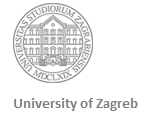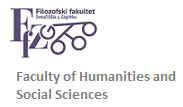Home » syllabus-courses in english-graduate and FF
Category Archives: syllabus-courses in english-graduate and FF
Language and cognition: from theory to application (SVI)
SYLLABUS
Language and cognition: from theory to application
University Course Taught in English
(elective course open to both foreign and Croatian students)
Instructor: Renata Geld, PhD
Institution: Faculty of Humanities and Social Sciences, University of Zagreb
Course title: Language and cognition: from theory to application
Language: English
Number of hours per semester: 30 hours
ECTS: 4 credits
Level: graduate
Course content: Students attending this course will be encouraged to discover and re-discover the nature of language and its relation to various aspects of cognition, and hypothesize the relevance of this relationship for various fields of science and everyday life.
Being a sophisticated and complex phenomenon, language offers numerous insights into how our mind works, i.e. how language relates to thought. The aim of this course is to introduce the fundamental notions related to human conceptual organization and discuss evidence supporting the idea that language communicates with other cognitive processes. If this is so, the language we speak represents a source of information about the nature of our mental imagery and cognitive processes such as attention, judgment and categorization, perspective, etc. Furthermore, the interrelation between language and our perceptual and conceptual knowledge opens up possibilities to investigate how human interaction with the world and our specific sensory experience affects the nature of language. This, in turn, allows linguists, psychologists, educationalists, special needs educationalists and speech therapists, first and second language researchers, philosophers, computer scientists, i.e. cognitive scientists from various disciplines as well as other scientists, to use language as a “diagnostic” tool to determine both highly individual and largely universal phenomena pertaining to the way we perceive, process and understand, store and use our knowledge. For example: the language children speak tells us a great deal about how their perceptual and conceptual categories are formed; various elements in the language of the congenitally blind are likely to be very informative about their mental imagery and the role of alternate sensory input they experience; what we attend to in the process of learning something new tells us a great deal about what we already know and how our domains of knowledge relate to each other, etc.
The course structure:
UNIT 1 – Introduction to central notions: human mind, general cognitive processes, perception, mental representation(s), mental imagery, concepts and conceptualization, experience and embodiment, language and linguistic meaning construal.
UNIT 2 – Cognitive science – the significance of interdisciplinarity in scientific research.
UNIT3 – Students’ profiles and reports (brief reports on the students’ field(s) of interest and future profession, motivation for joining the course, and tentative ideas about the importance of fundamental notions introduced).
UNIT 4 – The nature of general cognitive processes and their relation to language. Basics of cognitive development, and fundamental theoretical assumptions related to language acquisition.
UNIT 5 – The relationship between our body and mind, and the affect this relationship is likely to have on our thought and language.
Unit 6 – How our language(s) structure time and space, and what our language(s) reveal about our sensory experiences, cultural phenomena, and everyday life. The issue of creativity of human mind.
UNIT 7 – Students’ reports on selected topic(s). Discussion.
UNIT 8 – Individual and universal phenomena in cognitive processing. The nature of abstract thought and its interrelation with general cognitive processes and experience (examples from language, mathematics, physics, arts, etc.).
UNIT 9 – Brainstorming and discussing ideas for individual micro-projects.
UNIT 10 – Presentation of topics for micro-projects.
UNIT 11 – How to test theoretical assumptions, conduct research, and apply relevant findings.
UNIT 12 – Consolidation and revision.
UNIT 13 – Students’ reports (micro-projects).
UNIT 14 – Students’ reports (micro-projects).
UNIT 15 – Students’ reports (micro-projects).
Required reading:
– Croft, W. and Wood, E. J. (2000). Construal operations in linguistics and artificial intelligence. In: Albertazzi, L. (ed.), Meaning and Cognition, A multidisciplinary approach. Amsterdam/ Philadelphia: John Benjamins.
– Croft, W. and Cruse, D. A. (2004). Cognitive Linguistics. Cambridge: Cambridge University Press (selected chapters).
– Ellis, N. C. (2003). Constructions, Chunking, and Connectionism: The Emergence of Second Language Structure. In: Doughty, C. and Long, M. (eds.), The Handbook of Second Language Acquisition. Malden/Oxford/Melbourne/Berlin: Blackwell Publishing.
– Geld, R. and Šimunić, M. (2009). A case study of a blind speaker of English as L2. In: Brdar, M.,Omazić, M., Pavičić Takač, V. (eds.), Cognitive Approaches to English: Fundamental, Methodological, Interdisciplinary an Applied Aspects. Newcastle upon Tyne: Cambridge Scholars Publishing.
– Gibbs, W. R. (2006). Embodiment and Cognitive Science. Cambridge: Cambridge University Press.
– Langacker, R. W. (1999). Grammar and Conceptualization. Berlin & New York: Mouton de Gruyter, (selected chapters).
– Parrill, F., Tobin, V., and Turner, M. (eds.) (2010). Meaning, Form, and Body. Stanford: Center for the Study of Language and Information (selected chapters).
At the end of this course, at a general level, the students will be able to:
– find relevant literature and read it critically;
– analyze and synthesize various data;
– participate in discussions argumentatively and open-mindedly;
– appreciate and accept criticism and other people’s opinions;
– initiate, design and conduct a small-scale research.
At a more specific level, the students will be able to:
– consolidate their prior linguistic and general knowledge with new insights about the nature of language and human conceptualization;
– consolidate their prior linguistic and general knowledge with new insights about the interrelation between language and other cognitive processes;
– apply theoretical knowledge about the nature of language and cognition to their own areas of interest;
– recognize the relevance of certain interrelations between language and cognition for various scientific disciplines and fields of life.
Historical Sociolinguistics (archive)
Name of course: Historical sociolinguistics
Instructor: Dr. Alexander D. Hoyt, senior lector (lecturer in foreign languages)
ECTS points: 5
Language of instruction: English
Classroom hours weekly: lecture: 1 seminar: 2
Semester: Winter 2012/13
Status: elective course
Maximum enrolment: 20 students
Course description: The goals of this course are twofold. The first goal is to introduce students to the field of historical sociolinguistics, in which scholars studying the history of individual languages combine the methods of historical linguistics with those of sociolinguistics (especially variationist, or “Labovian”, sociolinguistics) in an attempt to reconsruct processes of language change in their social context. Research in this field tends to focus on texts that most closely represent spoken language (e.g., personal letters, theatrical plays, and court testimony transcriptions). The majority of historical sociolinguistic research has been done on Early Modern English, the largest project by far being the Corpus of Early English Correspondence (CEEC), a Finnish project headed by Terttu Nevalainen. Most other research in the field has been done on northern European languages such as Swedish, German, Dutch, and French. The second goal is to give students some “hands-on” experience. They will be shown how a completed digital corpus (e.g., the CEEC) can be used for basic research. In addition, students will participate in the construction of a sociolinguistic corpus by transcribing and analyzing personal letters written (or received) in Croatia in the late 1800s and early 1900s. Although the primary focus of this project is linguistic, students specializing in other fields, such as history, sociology, communications, and political science, should also find the course interesting from the socio-historical point of view, because the letters studied will give them insight into the everyday problems and experiences of people living in Croatia a century ago.
Grading method: The final grade is based on continuous assessment, which includes regular attendance, preparation for and participation in class, and timely submission of both a group report (4 students) and an individual term paper. the paper is worth 40% of the final grade; the group report, 30%; and other elements of continuous assessment, 30%. Students must fulfill all elements of continuous assessment in order to pass the course.
Course units:
1. Introduction and description of course requirements
2. Synchrony and diachrony
3. Historical sociolinguistics: beginnings and general goals
4. Applying contemporary sociolinguistic methods to data from the past
5. The role of the linguistic corpus in studies of linguistic variation
6. Private letters and old newspapers as sources for historical sociolinguistic analysis
7. Other written sources for historical sociolinguistic analysis
8. Orthographic variables
9. Phonological variables
10. Grammatical variables
11. Lexical-semantic variables
12. The influence of class, age, and gender on linguistic variation
13. Social networks and mobility in relation to linguistic variation
14. Internally and externally motivated language change
15. Presentations of student research
Required reading:
– Hernandez Campoy, Juan M. & J. Camilo Conde Silvestre (eds.). 2012. The Handbook of Historical Sociolinguistics. Wiley-Blackwell.
Secondary reading:
– Barton, David & Hall, Nigel (eds.). 1999. Letter writing as a social practice (Studies in Written Language and Literacy 9). Amsterdam/Philadelphia: John Benjamins.
– Brozović, Dalibor i Pavle Ivić (1988), Jezik, srpskohrvatski/hrvatskosrpski, hrvatski ili srpski. Zagreb: Jugoslavenski i leksikografski zavod “Miroslav Krleža”.
– Lass, Roger. 1997. Historical linguistics and language change. (Cambridge Studies in Linguistics 81). Cambridge: C.U.P.
– Milan Moguš. 1995. A History of the Croatian Language: Toward a Common Standard. Zagreb: Nakladni zavod Globus. Translated by Alexander D. Hoyt & Lelija Sočanac.
– Nevalainen, Terttu & Raumolin-Brunberg, Helena (eds.). 1996. Sociolinguistics and language history: Studies based on the Corpus of Early English Correspondence (Language and Computers: Studies in Practical Linguistics 15). Amsterdam – Atlanta, GA: Rodopi.
– Nevalainen, Terttu & Raumolin-Brunberg, Helena. 2003. Historical sociolinguistics: Language Change in Tudor and Stuart England. London: Pearson Education.
– Nevalainen, Terttu & Tanskanen, Sanna-Kaisa (eds.). Letter writing (Benjamins Current Topics 1). Amsterdam/Philadelphia: John Benjamins. [previously published in the Journal of Historical Pragmatics, 5:2 (2004)]
– Romaine, Suzanne. 1982. Socio-historical linguistics: Its status and methodology (Cambridge Studies in Linguistics 34). Cambridge: C.U.P.



